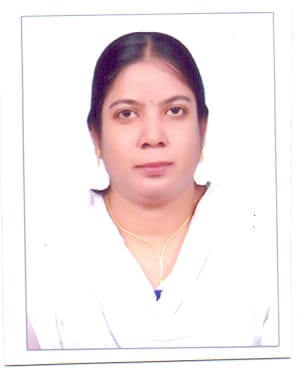Day 1 :
Keynote Forum
Robert O Young
PH Miracle Center, USA
Keynote: Cystic fi brosis and Pulmonary Adenocarcinoma lung cancer both metabolic and dietary acidic conditions of the interstitial fl uids of the interstitium

Biography:
Abstract:
Keynote Forum
Galina Migalko
Keynote: The importance of interstitial fl uid evaluation in relationship to any health condition

Biography:
Abstract:
- Bacteriology | Virology | Global Spread of Viruses | Clinical Immunology | Neglected Tropical and Rare Infectious Diseases
Location: MENA Plaza Hotel Albarsha
Chair
Kokila Selvaraj
Meenakshi Medical College Hospital and Research Institute, India
Co-Chair
Ayman Noreddin
University of Sharjah, UAE
Session Introduction
Joyvonne Kwamboka Ombega
Rare and Chronic Diseases Foundation, Kenya
Title: Challengers facing the Rare and Chronic disease patients
Time : 11:30 AM -12:00 PM

Biography:
Abstract:
Primary Hyperaldosteronism Patient.There are several challenges facing the rare patients, care givers and the health professionals.
Lack of diagnosis: Well these conditions are rare therefore most end up undiagnosed due to lack of adequate information and few research centres misdiagnosis; This is in the sense that some symptoms end up being confused as the disease itself and also most of these conditions have several and similar symptoms which makes it harder for the patient to get a diagnosis. Lack of adequate treatment due to lack of access to treatment facilities especially in developing countries where some health facilities are quite a distance. Orphan drug challenges; Most rare diseases have few drugs to none for the treatment of such conditions. This is due to business minded manufacturers who concentrate on what can sale Visa vie what is available for the rare community.
Economic challenges: These patients run from one health facility to another in search of an answer to their puzzle which is rare therefore they end up financially drained before they even get a diagnosis. It takes approximately 5 to 15 years to get a proper diagnosis which makes it a great challenge for the patient and their care givers. These leads into emotional challenges which can cause other health problemsLack of information and support system for such patients becomes a major hurdle in getting a diagnosis which leads to the health deterioration of the patient. Limited or non existing treatment options due to lack of research and treatment protocols for most of these rare diseases which most often than not leads to loss of life.
Social challenges: These rare diseases makes the patient live in isolation and loneliness which is fatal.We are social beings in nature and this leads to stigma from the community.
Cultural challenges: This is a major factor that is uniquely to the African context that prevents one from seeking for medical care since there are believes that such diseases a curse or have spiritual existence and connections. Disabilities; These diseases cause both physical and invincible disabilities which robs the patient their independence leading poverty. Theres is a major challenge of lack of preventive and curative therapies for rare diseases due to their rare nature and these mostly affect the developing countries who are in dire help with proper health equipments and facilities to help with research and therefore saving lives. Lack of rare patient registry is equally a major challenge and we are looking forward to creating more awareness in getting the government involved in developing it.
Nilanjana Ghosh
North Bengal Medical College, India
Title: Potable water and uncontaminated food at every household: Dream or reality? A study among tribal population of Naxalbari Block, Darjeeling district, West Bengal, India
Time : 12:00 - 12:30 PM

Biography:
Abstract:
Indranil Chakrabarti
North Bengal Medical College, India
Title: Incidental detection of parasites: A Pathologist’s viewpoint
Time : 12:30-13:00

Biography:
Abstract:
Ruchika Butola
Rajiv Gandhi Super Speciality Hospital, India
Title: Lophomonas blattarum infection in an immune-competent patient and its misdiagnosis: A case report
Time : 15:00-15:30

Biography:
Abstract:
Kavitha M
Kilpauk Medical College, India
Title: Changing trends in gonococcal infections-shift to MSM: Emerging resistances

Biography:
Abstract:
Raimundo Dos Santos
Hospital Nacional Guido Valadares, East Timor
Title: Unusual cause of owel obstruction in children in East Timor

Biography:
Abstract:
- Epidemiology of Re-Emerging Infectious Diseases| Causes, Symptoms and Diagnosis of Infectious Diseases | Advances in Antimicrobials, Vaccines and Therapeutics | Bacterial and Viral Genomics | Case Studies | Antiviral, Antibacterial, Antifungal Agents | Clinical Case Reports
Location: MENA Plaza Hotel Albarsha
Chair
Robert O Young
PH Miracle Centre, USA
Co-Chair
Hoda Mansour
GHD/EMPHNET Contractor, Egypt
Session Introduction
Sivasankari Murugan
Meenakshi Medical College Hospital and Research Institute, India
Title: Resistogram pattern of Escherichia coli isolated from various clinical samples in & around Kanchipuram
Time : 11:50 AM -12:20 PM

Biography:
Abstract:
Senthamarai Thiyagarajan
Meenakshi Medical College Hospital and Research Institute, India
Title: Detection of mecA gene by PCR among coagulase negative Staphylococci (CoNS) from various clinical samples in a tertiary care hospital
Time : 12:20-12:50 PM

Biography:
Abstract:
Prashanthi Rayapati
Lynbrook High School, USA
Title: The effect of G lucidum on the lifespan of caenorhabditis elegans modeling Duchenne muscular dystrophy
Time : 13:50-14:20

Biography:
Abstract:
C Anitha
Meenakshi Medical College Hospital and Research Institute, India
Title: Screening of invitro activity of antimicrobial and antibiofilm property of Mesenchymal stems cells against MDR gram negative organism isolated from urinary tract infections in tertiary care hospital
Time : 14:20-14:50









